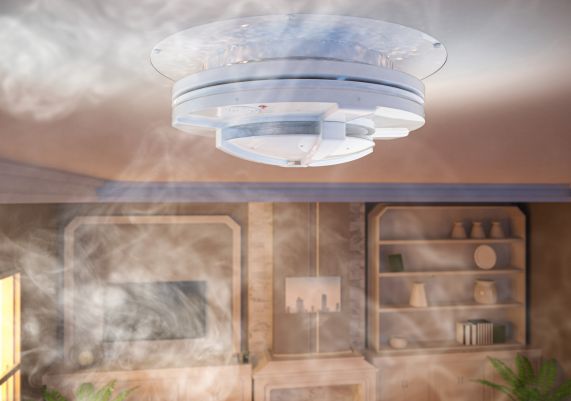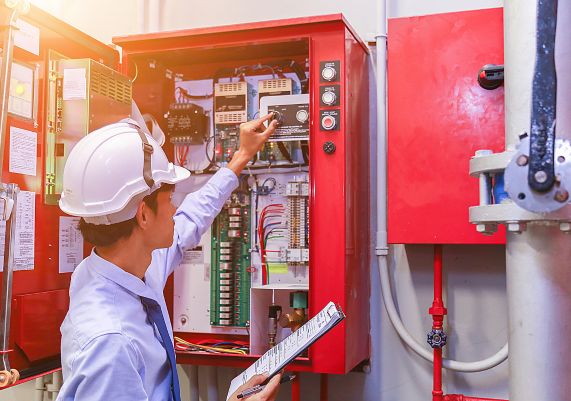
Fire Detection Solutions: Adaptable, Inventive, and Expandable
In today’s world, the importance of fire detection cannot be overstated. Early detection of fires is crucial for protecting lives, property, and the environment. With the advancement in fire detection technology, modern systems offer faster response times and more accurate detection methods than ever before. Let us explore the various aspects of fire detection, including the latest technologies, types of systems, and the best fire detection methods available.
Understanding Fire Detection Systems
Fire detection systems are designed to identify the presence of fire or smoke and promptly alert occupants and emergency services. These systems are essential to building safety protocols and are mandated in many jurisdictions.
Types of Fire Detection Systems
Heat Detectors: Heat detectors respond to changes in temperature. They are ideal for environments where smoke detectors, such as kitchens or garages, may produce false alarms.
Flame Detectors: These detectors identify the presence of flames through optical sensors. They are used in high-risk areas like chemical plants or fuel storage facilities.
Gas Detectors: Gas detectors monitor the concentration of combustible gases in the air, providing early warnings of potential fires.


Advanced Fire Detection Systems
The evolution of advanced fire detection systems has led to the development of more sophisticated and reliable technologies. These systems integrate multiple detection methods and intelligent algorithms to reduce false alarms and improve response times.
Features of Advanced Systems
Multi-Sensor Technology: Combines smoke, heat, and gas detection for comprehensive monitoring.
Wireless Connectivity: Enables seamless integration with building management systems and remote monitoring.
Artificial Intelligence: Utilizes AI to analyze patterns and differentiate between real threats and non-threatening events.
Early Warning Capabilities: Detects fires in their incipient stages, providing more time for evacuation and firefighting efforts.
The Role of Fire Detection Technology
Fire detection technology plays a pivotal role in enhancing the effectiveness of fire safety measures. Modern technologies offer smarter solutions that adapt to the specific needs of different environments.
Innovations in Fire Detection
Video Image Smoke Detection (VISD): Uses video cameras and image recognition software to detect smoke and flames.
Aspirating Smoke Detection (ASD): Continuously samples air through a network of pipes to detect minute smoke particles.
Infrared and Ultraviolet Detection: Detects flame signatures not visible to the naked eye, suitable for high-risk industrial settings.
Internet of Things (IoT) Integration: Connects devices for real-time data sharing and system optimization.
How to choose the Best Fire Detection Method for your space?
Selecting the best fire detection methods depends on the specific requirements of a building or facility. Factors to consider include the type of occupancy, environmental conditions, and potential fire hazards.
FlareSens Recommendations for Choosing Effective Fire Detection Method
1. Evaluate Your Space
Type of Area: Residential, commercial, or industrial spaces have different requirements.
Specific Risks: Identify any flammable materials or equipment present.
Environmental Conditions: Consider factors like dust, humidity, or ventilation that may affect detector performance.
2. Understand Fire Detection Options
Smoke Detectors: Ideal for general use; choose between ionization (fast-flaming fires) and photoelectric (smoldering fires) types.
Heat Detectors: Suitable for kitchens or garages where smoke detectors might cause false alarms.
Flame Detectors: Best for high-risk areas like chemical plants, detecting flames through optical sensors.
Gas Detectors: Monitor combustible gases, essential in spaces with gas appliances.
Advanced Fire Detection Systems: Consider advanced fire detection systems with multi-sensor technology for enhanced accuracy.
3. Consider Technology and Features
Wireless Connectivity: Simplifies installation and integration with other systems.
Smart Technology: Advanced fire detection technology with AI reduces false alarms and improves response times.
Scalability: Choose systems that can grow with your needs.
4. Compliance and Professional Advice
Regulations: Ensure the system meets local fire safety codes.
Expert Consultation: Consult fire safety professionals to tailor the solution to your specific needs.